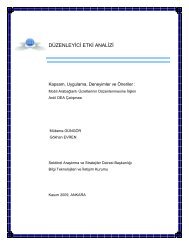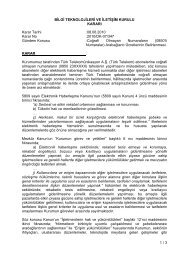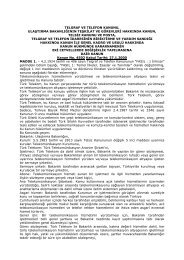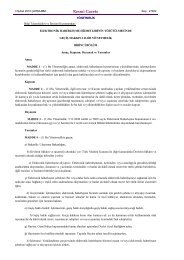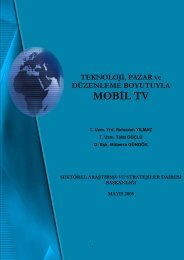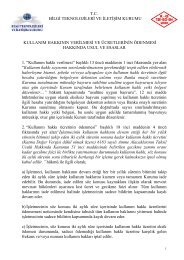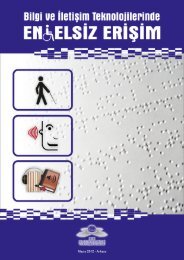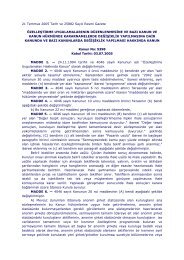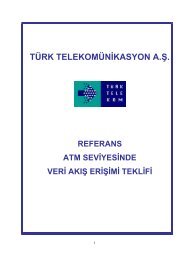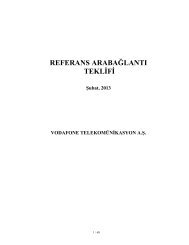city university london school of social sciences convergence of ...
city university london school of social sciences convergence of ...
city university london school of social sciences convergence of ...
You also want an ePaper? Increase the reach of your titles
YUMPU automatically turns print PDFs into web optimized ePapers that Google loves.
6. CONCLUSIONConvergence <strong>of</strong> telecommunications, broadcasting and information technologies is aphenomenon <strong>of</strong> last couple <strong>of</strong> decades accross the world. Technologicaladvancements such as digitalisation, computerization and development <strong>of</strong> internetcan be regarded as main drivers <strong>of</strong> <strong>convergence</strong> together with socio-economic driverssuch as opinions and reactions <strong>of</strong> end-users. As a result, it is possible to watchtelevision or read newspaper from our mobile telephones or to watch movies fromour computers. However everything about <strong>convergence</strong> is not good news. Astraditionally, separately regulated markets converge, some regulatory problems arise.This study concentrates on impact <strong>of</strong> <strong>convergence</strong> on regulatory frameworks. It isstated by many researchers and also by ITU and OECD that, blurring <strong>of</strong> thedistinctions between electronic communications sectors necessitates a revision intraditionally separate regulatory frameworks. In addition to this, <strong>convergence</strong> maynecessitate a single communications regulator to regulate telecommunications,broadcasting and information technologies markets together. One <strong>of</strong> the first andmost successful examples <strong>of</strong> converged communications regulator is OFCOM in theUK. By replacing five separate bodies in broadcasting and telecommunications area,OFCOM was established in 2003 aiming to regulate converging markets together.There are also many other converged communications regulators in Europe andacross the world such as Finland, Denmark, Australia, Singapore, Malaysia andSouth Africa.When we have a look at the situation in Turkey, the main barriers againstdevelopment <strong>of</strong> <strong>convergence</strong> are current confusing regulatory framework and lack <strong>of</strong>a consolidated regulatory agency. However, currently there is not any effort at theinstitutional level taking <strong>convergence</strong> into account. Telecommunications andbroadcasting sectors are still being regulated separately and general competition lawapplies to information technologies sector. However there are some indicatorssignaling that <strong>convergence</strong> is starting to take place in the agenda. ElectronicCommunications Law regarding the regulation <strong>of</strong> telecommunications sector hasenacted in May 2009. Although the main driver <strong>of</strong> enactment <strong>of</strong> this Law is EUcandidacy <strong>of</strong> the country, it introduced a new technology neutral licensing regime in47




